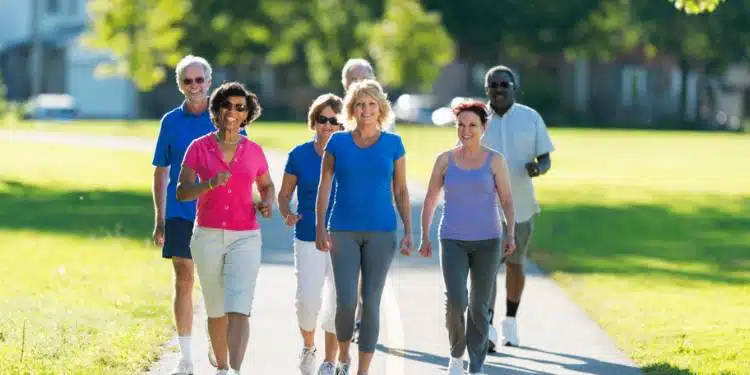Have you ever wondered why your knee swells?
If you have osteoarthritis, you may notice intermittent swelling of the knee. Have you ever wondered why? Swelling is a way for your knee joint to tell you “Hi I’m angry!” It is common that arthritic joints become swollen after periods of immobility, too much activity, too much repetition, in response to a recent injury and/or a possible dietary association.
As a physical therapist and osteoarthritis specialist, I help thousands of people deal with swelling of the knee and many other symptoms that coincide with osteoarthritis. If you notice an increase in swelling, it helps to look back to see what had changed in your daily routine. For example:
- Did you do more or less activity than usual?
- More specifically, have you walked more than usual?
- Did you recently injure yourself?
- Did you recently travel on an airplane?
- Have you ate any differently than usual over the past few days?
- Is your joint also red and warm to the touch?
Ask yourself these questions if you begin to notice any joint swelling. This can help you not only understand why it is happening but also help you set a path forward.
If you do notice accompanying redness and/or warmth to the joint, along with potential swelling into your calf- this could be a sign of something more serious that warrants further medical examination.
What to do next
It is important to reduce swelling as it can limit the range of motion of your knee, make it feel heavy, and impair your ability to get around.
It is totally possible to reduce swelling of the knee by making a few simple changes to your daily routine. Listed below are five ways you can start with today!
It is important to know that sometimes, swelling may need to be drained by a healthcare professional if it does not diminish with these suggestions below, something that’s called “water on the knee”.
Simple and frequent movement
If you reduce activity levels and find yourself staying in one position for prolonged periods of time, swelling of the knee is possible. The longer your knee is motionless, the more time fluid and inflammation has to accumulate.
One way to combat this is to introduce simple and frequent movement. This can be done seated, standing, or even laying down. Moving your leg/knee every 10-15 minutes can help to pump the fluid out so it doesn’t stick around.
Simply bending and straightening your knee or lifting your leg into a march are two great ways to make your muscles work. Your muscles are your best friend when it comes to pumping fluid around your body.
It is important to note that these movements should not cause pain. If they do, it is likely it could increase joint swelling due to increased irritation. Find something that feels good!
Monitor activity levels
Another common reason for swelling of the knee, especially with osteoarthritis is overactivity. Doing too much can create irritation. When your joint is irritated, it can swell as a sign to let you know what you did was too much.
I often see this when clients go from not very much walking in their daily routine to all of a sudden walking 3+ miles when on vacation for example. A steep increase in activity, especially walking, can trigger knee swelling.
It is important to think back to the activity you may have done and the distance/time/weight that you can measure it with. This now can be a threshold for you when determining how much activity you should do to avoid knee swelling.
For example, if you notice that after one miles of walking- your knee is swollen that night- next time you go for a walk, try only a mile or even a mile and a half to stay under the threshold.
Same thing applies if you recently added more weight to a workout routine or you spent 3 hours on your feet cooking a holiday meal. Reducing the weight or finding times to take a seated break when cooking both can be successful strategies to reduce swelling of the knee.
Move differently
As humans, our daily lives can be repetitive. You may find yourself always moving in a similar direction. Walking, accomplishing things around your house, and even exercising- about 90% of these activities are done in a forward direction.
Repetition in the same direction can lead to swelling of the knee due to increased focal stress in the joint. This is why you might notice more swelling after walking for exercise or after running. Similar muscles are working over and over again, leaving others to be neglected.
One way you can dissipate the stress to help manage swelling is to add variety to your movement. I have an article here that explains this in further detail.
By variety, I mean, adding in side to side or backward movement. This allows other muscles to work and helps to disperse the stress going through your knee. It is truly amazing how much of a difference this can make.
Adding in a few movements side to side or backwards during a warm up, during activity, or even afterwards can act to decrease swelling of the knee joint.
Compression sleeves
Neoprene compression sleeves can help to reduce knee swelling, especially during activity. Their main job is to limit the space the joint is able to expand in the same way those compression socks you get from the hospital prevent ankle swelling.
I love neoprene knee compression sleeves because they are comfortable and usually don’t limit your range of motion in any way. Some of the other knee braces may have hard metal or plastic parts that limit how much you are able to move.
Using these compression sleeves not only can manage swelling but they can also help to keep pain at bay too.
Some clients wear them when they are exercising, wear them to work, and even wear them when traveling so swelling does not become a problem.
Here is a list of my favorite knee sleeves.
Adventure without worrying about swelling of the knee
If your knee swells up, it can make mobility hard. It can also hang around for much longer than you’d like if you don’t take action to help it.
Many times people think that resting will help the swelling to decrease. This can be the case after an acute injury. Without an injury though, rest may make swelling worse.
Awareness of what could have led to the swelling and use of these 4 strategies can help you to manage your knee swelling so your adventure doesn’t have to be interrupted.
Keeping your knee moving optimally is so important to help you manage osteoarthritis pain and build strong legs so you can continue to adventure the way you want to.
MORE ARTICLES FROM DR. ALYSSA KUHN
5 Exercises for Joint Pain – Why Variety is the key to Relief
Try These 3 Things Before Getting an Injection for Knee Arthritis
Tips on How to Loosen Your Tight Hip (and Stretching Isn’t the Answer!)
 Dr. Alyssa Kuhn is a physical therapist and osteoarthritis specialist. She founded Keep the Adventure Alive to show the world that an osteoarthritis diagnosis is not necessarily a death sentence to everything you love doing! Dr. Kuhn helps people all around the world find pain relief, regain confidence, and reignite adventure through virtual services and online programs. She breaks through the doom and gloom and brings a fresh, positive perspective to help your arthritic joints. You can, in fact, create your own arthritis adventure, and she is on a mission to show you how. Learn more about Dr. Kuhn on her Youtube channel or website.
Dr. Alyssa Kuhn is a physical therapist and osteoarthritis specialist. She founded Keep the Adventure Alive to show the world that an osteoarthritis diagnosis is not necessarily a death sentence to everything you love doing! Dr. Kuhn helps people all around the world find pain relief, regain confidence, and reignite adventure through virtual services and online programs. She breaks through the doom and gloom and brings a fresh, positive perspective to help your arthritic joints. You can, in fact, create your own arthritis adventure, and she is on a mission to show you how. Learn more about Dr. Kuhn on her Youtube channel or website.
originally posted May 2, 2022
updated May 25, 2023










